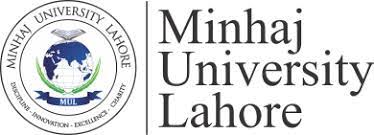Impact of Islamic Financial Inclusion on Economic Growth in Nigeria
DOI:
https://doi.org/10.58932/MULD0030Keywords:
Financial Inclusion, Economic Growth, Linear CausalityAbstract
Although the connection between finance and growth is well deliberated in literature, attentions are now geared to non interest inclusive finance with understanding the deficiency of traditional inclusive finance. However, the impact of interest free inclusive finance on growth still is partly examined. This research work dealt with Islamic inclusive finance - growth nexus. The research employed quarterly data spanning from (2010-2020). In this work, a novel index of Islamic financial inclusivity was constructed using the (PCA) and a recently developed Bootstrap ARDL (BARDL) Cointegration technique was used in analyzing the data. The finding indicates a number of results. First, the results of BARDL demonstrates a robust association among Islamic Inclusive finance and Growth. As such, it demonstrates the presence of positive and statistically significant nexus between Islamic inclusivity finance and growth. Moreover, findings also reveal presence of cointegration among Islamic inclusivity finance and growth. As such, interest free finance can be used as a tool to help nations to exit from economic recession and other macroeconomic challenges.
References
Abduljalil, Y. (2019). Financial development and economic growth: Time series evidence from Pakistan and China. Journal of Economic Cooperation, 29(2), 29-68.
Abiola, J., Babajide, AA., & Folasade, S. (2015). Financial inclusion and Economic growth: An empirical analysis. International journal of research in social sciences. 2(3), 116-131.
Abubakar, A. & Gani, I.M. (2013). Impact of banking sector development on economic growth: Another look at the evidence from Nigeria. Journal of Business Management and Social Sciences Research. 6(3), 71-83.
Adeneyi, O. A. & Babatunde, S.O. (2014). Financial depth, financial access and economic growth in Nigeria. Journal of Monetary and Economic Integration, 12(2), 121-127.
Ahmad, D. S., Qamar, A. J. ., Bhatti, M. A. A., & Bashir, U. (2023). Integrating Islamic Ethics with Modern Governance: A Comprehensive Framework for Accountability Across Religious, Social, and Economic Dimensions. Al-Irfan, 8(15), 51–79.
Ajakaiye, O. (2005). Financial inclusion in Nigeria. News watch Times. July, 2019; 1-56. Lagos.
Aliero, H.M. & Ibrahim SS. (2012). An analytical review of financial intermediation in the rural areas of Nigeria. In Mukhtar, M (ed.), studies in the state of Nigerian economy.
Andrianaivo, M. & Kpodar, K. (2011). Mobile phones, financial inclusion and growth. Review of Economics and Institutions. 3(2), 1-30.
Arshed, N., Yasmin, S., & Gulzar, M. (2020). Islamic Financing Portfolio and its Comparative Growth Potential. Islamic Banking and Finance Review,7, 60-91.
Awdeh, A. (2012). Banking sector development and economic growth in Lebanon. International Research Journal of Finance and Economics. 100, 53-62.
Babajide, A.A, Adegboye, FB. & Omankhalen, A. (2014). Financial inclusion and economic growth in Nigeria. International Journal of Economics and Financial Issues. 5(3), 629-637.
Barine, M. N. (2019). Financial inclusion index in Nigeria: An exploratory analysis. Journal of Publication and Social Studies. 4(1), 26-36.
Beck, T., Demirgüç‐Kunt, Livine, R.., and Maksimovic, V. (2000). Financial and legal constraints to growth: does firm size matter? The Journal of Finance, 60(1), 137-177.
Burgess, R. & Pandey, R. (2007). Do rural banks matter? Evidence from the Indian Social Banking Experiment. The American Economic Review. 95(3), 780-795.
Central Bank of Nigeria (2009). The Current Global Financial Crisis: Antecedents, Causes, Effects and Implications for the Nigerian Economy. A presentation by the Research Department, CBN at the seminar on Global Financial Crisis held in Abuja.
CBN, 2017. The 2016 Annual Report of the National Financial Inclusion Strategy Implementation.
Central Bank of Nigeria (CBN) Statistical Bulletin (2020).
Conroy, J. (2005). APEC and Financial inclusion: Missed opportunities for collective actions. Asia Pacific Development Journal, 12(1), 53-80.
Demirguc- kunt, A. & Levine, R. (2008). Finance and economic opportunity. World Bank policy research working paper series 4468. The world Bank Washington DC.
Dupas, I. & Jonathan, S. (2009). Financial inclusion and economic growth nexus: evidence from Kenya. American Journal of Business and management. 1(14), 241-249.
Elis, O., Lema, S. & Rud, E. (2011). Financial inclusion and development. A Journal of International Development. 2(3), 63-71.
Emanuel, I. J.& Odum, A. N. (2019). Effect of financial intermediation on economic development of Nigeria. Journal of Economics and Finance, 8(3), 23-37.
Enueshike, T. & Okpebru, S. (2020). Financial Inclusion and economic growth in underdeveloped countries. Economic Development and Cultural Change. 12 (3), 439-459.
Eryilmaz, F., Bakir, H. & Mercan, M. (2015). Financial development and economic growth: panel Data Analysis. In Handbook of Research on Strategic Development and Regulatory Practice in Global Finance. 11(7), 233-245.
Goldsmith, R.W. (1969). Financial structure and development, New Haven, CT: Yale University Press.
Greenwood, J. & Jovanovic, B. (1990). Financial development, growth and the distribution of income. Journal of Political Economy, 98(5), 1076-1107.
Hassan, M.K., Sanchez, B. & Yu, J.S. (2011). Financial development and economic growth: new evidence from panel data. The Quarterly Review of Economics and Finance. 51 (1), 88-104.
Ibrahim, H. B., Manu, D. & Adamu, I. (2019). An examination of the impact of financial inclusion on poverty reduction: Empirical evidence. International Journal of Scientific and Research Publication, 9(11), 14-22.
Ibrahim, SS., Ozdeser, H. & Cavusoglu, B. (2018). Financial Inclusion as a pathway to welfare enhancement and income equality: Micro- level evidence from Nigeria. Development Southern Africa. 36(3), 390-407
Ibrahim, SS. (2014). Does rural financial development spur economic growth? Evidence from Nigeria. Contemporary Issues in Nigeria’s National Development. Usmanu Danfodio University Press, Sokoto, 257-266.
Ibrahim, SS & Hussaina, S. (2022). Testing the Effect of Islamic Financial Inclusion, Infrastructural Quality on Economic Growth in Nigeria. Malia Journal of Islamic Banking and Finance, 6(2), 2654-8569.
Jisha, J., Varghese, T. (2016). Role of financial inclusion in the development of Indian Economy. Journal of Economics and Sustainable Development. 5(11), 6-12.
Kama, U., & Adigum, M. (2012). Financial inclusion in Nigeria: Issues and Challenges. 45;145. Abuja. Available: http://www.cenbank.org/Out/2014/RSD/Occasional paper No. 45. Issues and Challenges.pdf.
Kennedy, J. & Samuelson, R. (2010). Rural micro financing and poverty alleviation: Evidence from Nigeria. A Journal of Business Perspectives. 13, 51-59.
King, R.G. & Levine, R. (1993). Finance and Growth: Schumpeter might be right. The Quarterly Journal of Economics. 108 (3), 717-737.
Law, S.H. & Singh, N. (2014). Does too much Finance harm economic growth? Journal of Banking and Finance. 41, 36-44.
Levin, R. (2004). Finance and growth: Theory and Evidence. Paper prepared for the Handbook of economic growth. University of Minnesota and NBER. 342.
Nkwede, K. (2009). Financial inclusion and development: Recent Impact Evidence. Journal of Management Sciences and Administration. 3(4), 53-76.
Nzotta, O. & Okereke, L. (2010). Financial inclusion and Growth: Recent Impact Evidence. Journal of Management Sciences and Administration. 2(5), 43-66.
Okoye, T., Erin, S. & Modebe, I. (2017). Financial inclusion as a Strategy for enhanced economic growth and development. Journal of International Development. 3(6), 63-76.
Osinubi, S. & Akinyele, O. (2006). Impact of financial inclusion and financial literacy on economic growth in Nigeria. Journal of Applied Finance and Banking, 2(6), 95-115.
Paschal, H. T. & Amalachukwu, I. (2019). Financial development and economic growth in underdeveloped countries. Economic Development and Cultural Change. 14 (2), 429-447.
Sarma, M. (2015). Index of Financial Inclusion- A measure of financial inclusiveness, Berlin working papers on money, finance, trade and development, working paper. Available from: http://finaceand-trade,titw-berlin.de. (May 7, 2012) European Journal of Business and Management. 7(35), 61-80.
Todaro, P. M. (1990): Economic Development eleventh edition. New York, 6-8.
Torruam, J. T., Chiawa, M. A. & Abur, C. C. (2013). Financial deepening and economic growth in Nigeria: An application of cointegration and causality analysis. International Journal of Finance and Accounting, 6 (2), 19- 27.
Usman, S. (2010). Insight in to the state of Nigerian economy, being a speech delivered by the Honorable minister of National Planning Commission, at Bayero University, Kano. Available from http://www.npc.gov.ng/main/ministerspeech
World Bank (2007). Making Finance Work for Africa. The International Bank for Reconstruction and Development/The World Bank. Available at: www.worldbank.org
World Bank. (2018). World Development Indicators. Retrieved from http://data.worldbank.org/ topic/financial-sector









